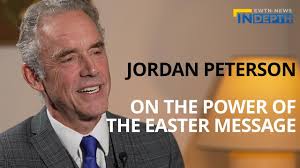It is a telling sign in the retirement of Justice John Paul Stevens that he did not choose to retire from the Court when his successor could have been appointed by a Republican president. That was a measure of how far Stevens had moved from the circle of judicial conservatives and become, in fact one of the leaders of the liberal bloc. He was prepared to sweep away any lingering barriers to the freedom to choose an abortion at any time in a pregnancy, for virtually any reason. His reverence for the First Amendment found the most curious suspension when it came to protecting the rights of pro-life demonstrators outside of abortion clinics. His was a ready vote for any measure to extend gay rights or undermine the traditional laws on marriage.
He was also willing to extend the powers of the judges for the first time over decisions taken on the battlefield. In that way, decisions on the safety of the American people would be taken out of the hands of elected officers, who bore a direct responsibility to the people whose lives were at stake. A year and a half into Stevens’ tenure on the Court, a lawyer in the administration that appointed him remarked to me that Stevens was an “unguided missile.” That comic slur proved quite inaccurate: There was nothing random about his decisions; they were indeed guided by a set of principles, but principles quite at odds with those of any conservative administration.
As seasoned as he had been as a lawyer and judge, Justice Stevens could experience the most unaccountable surprises. And so he was notably surprised, in a case in the 1980’s, when Justice White remarked that he too could accept Roe v. Wade – if it were read in a certain way. Roe v. Wade could be notably different if it were simply placed on the same ground as all of those other precedents that were being taken now to entail, or make necessary, the holding in Roe.
And so, for example, that so-called “basic right to marry,” invoked in Loving v. Virginia (1967) was never understood to mean that the law could not place many serious restrictions on the freedom to marry. That freedom could be denied to minors and to close, blood relatives. People may love many other persons, and love their dogs and horses – and Philip Buble in Maine may earnestly wish to marry his thirty-seven-pound dog Lady – but the law may restrain people from marrying more than one person, it may confine the choice to one species and to a member of the opposite sex.
But with Roe v. Wade the Court produced a “right” nearly absolute, which could not be restricted, in the same way, for many reasons at many points. All of the gradations of trimesters were swept away by the holding of the Court in Doe v. Bolton: an abortion could be ordered at virtually any time, even quite late in the pregnancy, if a woman professed to suffer distress, or an assault on her mental “health” if she were denied the surgery.
What I took Justice White to mean was that Roe v. Wade would be strikingly different if it were understood that the law could place many legitimate restrictions on abortion for many plausible reasons. Roe might be taken to confirm a right on the part of women to end a pregnancy under certain grave circumstances – as in that vanishingly small number of cases in which their own lives were in danger. And the law may insist that the reasons brought forth to justify the killing of the child in the womb should be at least as compelling as the reasons brought forth to justify the taking of any other human life.
If the law were understood in that way, then that “right to abortion” could be scaled back, step by step, until it was virtually the same as the laws on abortion as they were administered in most of the states before Roe v Wade. Roe could become then a shell, with most of its radical substance removed.
That is indeed the prospect that may have put in place now by the holding of the Roberts Court when it sustained the federal law on partial-birth abortion. The implication was that the Court might be in business now to start entertaining laws springing from the states, placing various restraints on abortion, and in a long series of steps, sustaining those restrictions one at a time.
The replacement of Justice Stevens does not dislodge the majority that put that cast of things in place. But it also does nothing to strengthen that position. This was a retirement that came thirty-four years too late. Now we brace for another set of hearings. And on that, more to come.
Another opening, another show.















